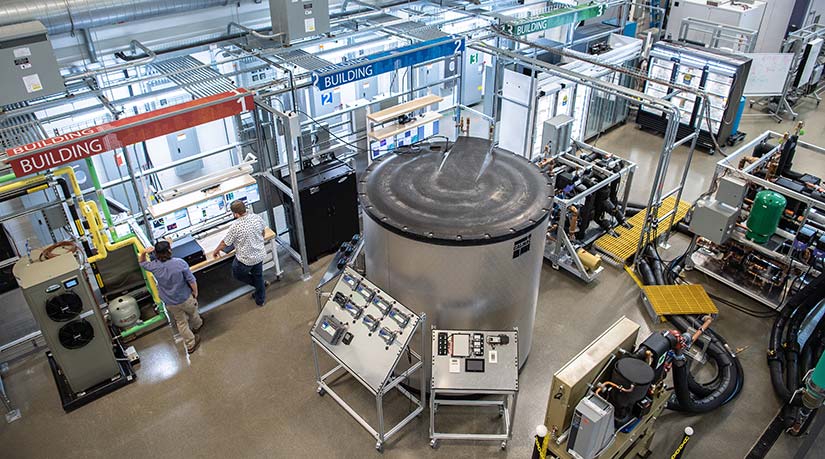Grid-Interactive Buildings
Buildings-to-grid research at the Energy Systems Integration Facility (ESIF) targets solutions to improve the interaction between the building and the grid.

The ESIF provides researchers the unique capability to emulate any grid scenario at the megawatt scale. NLR has developed a unique network to allow for an interactive connection between simulation and physical hardware. At the ESIF, NLR can evaluate a technology in Alaska one day and California the next by leveraging the flexibility of simulation while still using a physical technology to validate performance. This research focuses on evaluating high-efficiency energy technologies at multiple scales for buildings, communities, and districts.
The ESIF Advantage
Commercial Buildings Research Infrastructure
NLR's Commercial Buildings Research Infrastructure is critical to determining how commercial grid-interactive efficient buildings can provide load flexibility for the grid. Buildings-to-grid research in this space targets solutions to minimize energy consumption while improving grid resilience.
Residential Research Infrastructure
In the Systems Performance Laboratory, three research homes equipped with major appliances and other typical loads allow for the evaluation of connected appliances, advanced sensors and controls, and home energy management systems. Each home has connections for 120/240 volts of electric service, water, and natural gas—with distribution transformers that allow the homes to be connected and evaluated as a miniature neighborhood. With hardware-in-the-loop evaluation capabilities, researchers can implement hardware controls on residential loads in the lab and simulate its impact on distributed energy generation.
Learn about NLR's Buildings Research Program and contributions to the Behind-the-Meter Storage Consortium, which is developing energy storage technologies for the grid through grid-interactive buildings and vehicles.
Contacts
Grant Wheeler
Researcher, Commercial Buildings Research Infrastructure
Share
Last Updated Dec. 31, 2025
